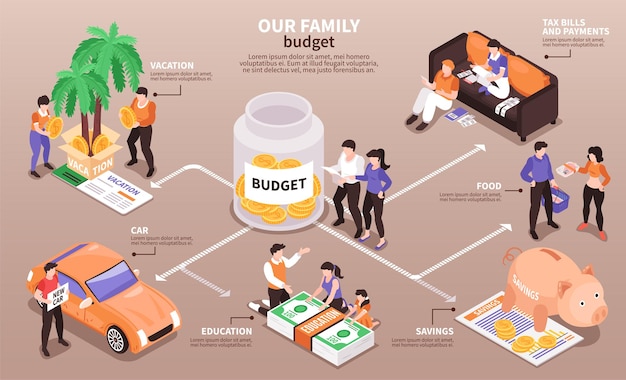Financial Planning: Building an Emergency Fund for Unexpected Events

Financial planning for unexpected events necessitates building an emergency fund to cover unforeseen expenses like job loss, medical emergencies, or home repairs, ensuring financial stability and peace of mind during turbulent times.
Life is full of surprises, and not all of them are pleasant. Unexpected events can wreak havoc on your finances if you’re not prepared. That’s why financial planning for unexpected events: building an emergency fund, is one of the smartest moves you can make to protect your financial well-being.
Why is Building an Emergency Fund Crucial?
An emergency fund acts as a financial safety net, providing a readily accessible source of funds to cover unexpected expenses without resorting to debt. It’s a cornerstone of sound financial planning, offering peace of mind and preventing long-term financial setbacks.
The Unexpected is Inevitable
Life rarely goes according to plan. From sudden job loss to unexpected medical bills or car repairs, unforeseen events can quickly drain your savings. An emergency fund helps you weather these storms without accumulating high-interest debt.
Peace of Mind and Reduced Stress
Knowing that you have a financial cushion to fall back on can significantly reduce stress and anxiety. It allows you to face unexpected challenges with confidence, knowing that you’re financially prepared.
- Avoid Debt Accumulation: An emergency fund prevents you from relying on credit cards or loans, which can lead to a cycle of debt.
- Maintain Financial Stability: It helps you maintain your financial stability by covering expenses without disrupting your long-term financial goals.
- Reduce Stress and Anxiety: Knowing you have a financial buffer in place provides peace of mind and reduces financial stress.
Ultimately, having an emergency fund is a proactive step that empowers you to handle life’s uncertainties with greater financial resilience.
Determine Your Emergency Fund Goal
Determining the right size for your emergency fund is crucial. It should be large enough to cover your essential living expenses for a specific period, providing you with a financial buffer during times of uncertainty.

Calculate Your Monthly Expenses
Start by calculating your average monthly expenses, including rent or mortgage payments, utilities, groceries, transportation, insurance premiums, and any other essential costs. This will give you a clear picture of your minimum financial needs.
How Many Months of Expenses?
A general rule of thumb is to aim for an emergency fund that can cover three to six months of living expenses. However, the ideal amount may vary depending on your individual circumstances, such as your job security, health insurance coverage, and risk tolerance.
- Three Months: Suitable for individuals with stable jobs and low-risk profiles.
- Six Months: Recommended for those in industries with high job insecurity or those with significant financial responsibilities.
- More Than Six Months: May be necessary for self-employed individuals or those with chronic health conditions.
Remember, it’s better to overestimate rather than underestimate your emergency fund needs. Having extra padding can provide additional security and peace of mind.
Where to Keep Your Emergency Fund
Choosing the right place to store your emergency fund is crucial. You need an account that offers both easy access to your funds and a reasonable level of security.
High-Yield Savings Accounts
High-yield savings accounts are a popular choice for emergency funds. They offer competitive interest rates while still providing easy access to your money. Many online banks offer higher rates than traditional brick-and-mortar banks.
Money Market Accounts
Money market accounts are another option. They typically offer higher interest rates than regular savings accounts, but they may come with certain restrictions, such as minimum balance requirements or limited transactions per month.

It’s important to choose an account that is FDIC-insured to protect your funds in the event of a bank failure. Consider factors such as interest rates, fees, and accessibility when making your decision.
Strategies for Building Your Emergency Fund
Building an emergency fund can seem daunting, especially if you’re starting from scratch. However, with a strategic approach and consistent effort, you can reach your savings goal.
Set a Realistic Savings Goal
Start by setting a specific and achievable savings goal. Break down your goal into smaller, manageable chunks, such as saving a certain amount each week or month. This can make the process feel less overwhelming.
Automate Your Savings
Set up automatic transfers from your checking account to your emergency fund each payday. This ensures that you consistently contribute to your savings without having to think about it.
Cut Unnecessary Expenses
Review your budget and identify areas where you can cut back on spending. Consider reducing discretionary expenses such as dining out, entertainment, or subscriptions. Even small savings can add up over time.
- Track Your Spending: Use a budgeting app or spreadsheet to track your expenses and identify areas where you can save money.
- Set Spending Limits: Establish spending limits for different categories and stick to them.
- Find Free or Low-Cost Activities: Explore free or low-cost activities to replace expensive entertainment options.
Remember, building an emergency fund is a marathon, not a sprint. Be patient and persistent, and celebrate your progress along the way.
Replenishing Your Emergency Fund
It’s important to replenish your emergency fund after you’ve used it. Treating your emergency fund as a revolving source of funds ensures that you’re always prepared for unexpected expenses.
Prioritize Replenishment
Make replenishing your emergency fund a top priority. Adjust your budget as needed to allocate funds specifically for this purpose. Consider temporarily reducing contributions to other savings goals, such as retirement, to accelerate the replenishment process.
Avoid Depleting It Completely
Whenever possible, avoid depleting your emergency fund completely. Try to cover smaller expenses from other sources, such as your regular income or a small savings account. This will help you maintain a financial cushion for true emergencies.
Replenishing your emergency fund is an ongoing process. By making it a habit, you can ensure that you’re always prepared to handle life’s unexpected challenges.
Common Pitfalls to Avoid
Building and maintaining an emergency fund requires discipline and awareness. Avoiding common pitfalls can help you stay on track and maximize the benefits of your savings.
Using It for Non-Emergencies
One of the biggest mistakes people make is using their emergency fund for non-emergency expenses. It’s important to define what constitutes a true emergency and resist the temptation to dip into your savings for discretionary purchases or wants.
Investing It in Risky Assets
Investing your emergency fund in risky assets, such as stocks or cryptocurrencies, can jeopardize its availability when you need it most. Your emergency fund should be kept in a safe and liquid account that is easily accessible.
By avoiding these common pitfalls, you can ensure that your emergency fund remains a reliable source of financial protection when you need it most.
| Key Point | Brief Description |
|---|---|
| 💰 Emergency Fund Goal | Aim for 3-6 months of living expenses. |
| 🏦 Where to Keep It | Use high-yield savings or money market accounts. |
| 💸 Building Strategies | Automate savings and cut unnecessary expenses. |
| 🔄 Replenishing Funds | Prioritize replenishing after each use. |
Frequently Asked Questions
▼
A general guideline is to save three to six months’ worth of essential living expenses in your emergency fund.
▼
High-yield savings accounts and money market accounts are ideal, offering both liquidity and security for your funds.
▼
Prioritize replenishing it as soon as possible, by adjusting your budget and allocating extra funds towards savings.
▼
It’s best to keep your emergency fund in a safe, liquid account, as investing it in risky assets can jeopardize its availability.
▼
A true financial emergency includes unexpected medical bills, job loss, or urgent home repairs that require immediate attention and funds.
Conclusion
In conclusion, financial planning for unexpected events: building an emergency fund is not just a good idea, it’s a necessity. It empowers you to face life’s uncertainties with confidence, knowing that you have a financial safety net to protect you and your family.





